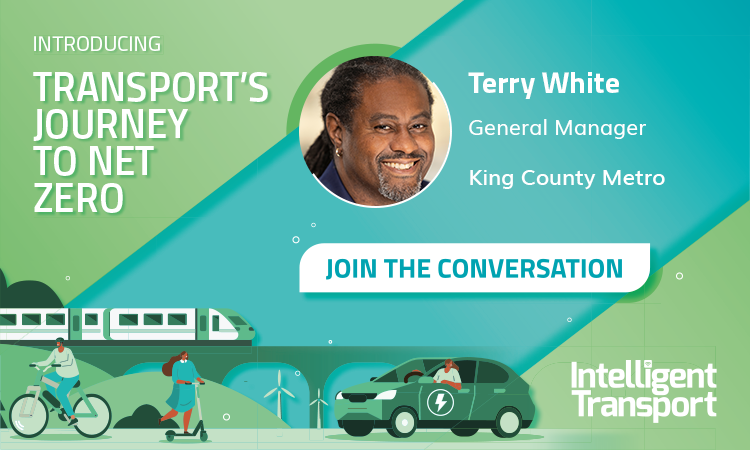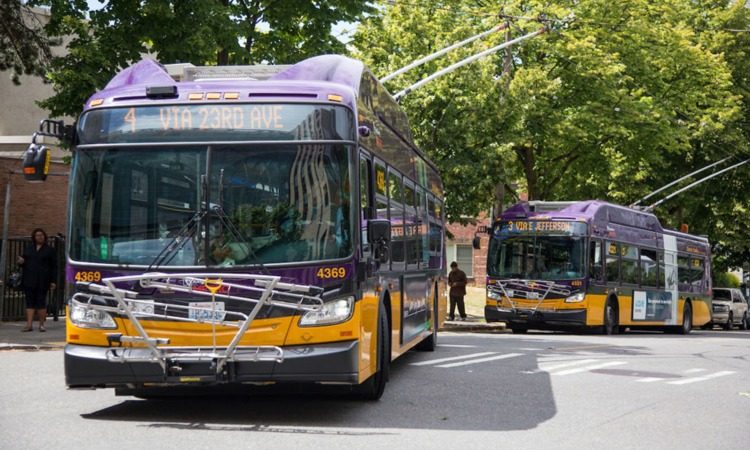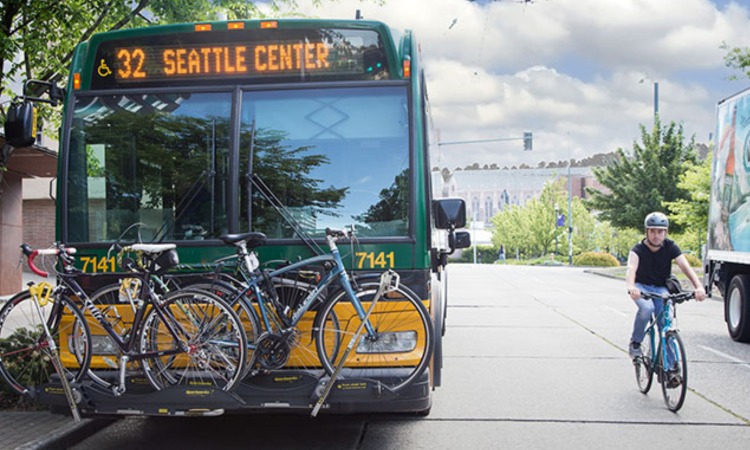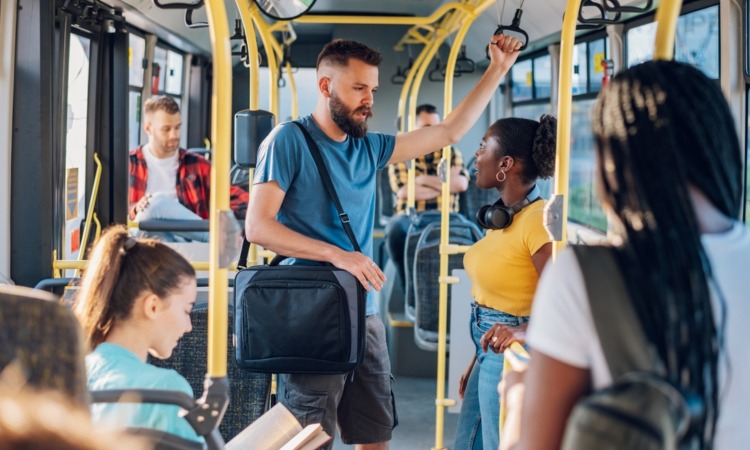Transport’s journey to net zero: Investing in our youth is necessary to encourage modal shift, says King County Metro
- Like
- Digg
- Del
- Tumblr
- VKontakte
- Buffer
- Love This
- Odnoklassniki
- Meneame
- Blogger
- Amazon
- Yahoo Mail
- Gmail
- AOL
- Newsvine
- HackerNews
- Evernote
- MySpace
- Mail.ru
- Viadeo
- Line
- Comments
- Yummly
- SMS
- Viber
- Telegram
- Subscribe
- Skype
- Facebook Messenger
- Kakao
- LiveJournal
- Yammer
- Edgar
- Fintel
- Mix
- Instapaper
- Copy Link
Posted: 25 November 2022 | Terry White - King County Metro | No comments yet
In the latest instalment of Intelligent Transport’s exclusive sustainable mobility Q&A series, Terry White, General Manager of King County Metro, discusses the numerous projects that the agency is working on to accelerate its transition to a zero-emission fleet by 2035, as well as why it is importance to encourage the early adoption of public transit use, in order to help solidify it and other active modes as the default transportation mode of choice.


The ever-pressing challenges of poor air quality and traffic congestion have been a key focus for the transport industry, as operators and authorities strive to achieve their net zero targets. How big a part does the decarbonisation of public transport play in reducing King County’s carbon emissions?
Our transition to a zero-emission fleet will eliminate another 100,000 tonnes of greenhouse gas emissions”
Metro’s transition to a zero-emission fleet will help to meet the King County Strategic Climate Action Plan’s goal of halving county-wide greenhouse gas (GHG) emissions by the end of the decade. In King County, 6.1 million tonnes of greenhouse gases are emitted annually from passenger vehicles. Fast, reliable and integrated transit services and compact land use development reduces passenger car trips, preventing approximately 700,000 tonnes of greenhouse gas emissions. In addition, our transition to a zero-emission fleet will eliminate another 100,000 tonnes of greenhouse gas emissions. Metro is also committed to reducing energy use, emissions and waste throughout our system. We’re developing a plan to eliminate fossil fuel use in our facilities and to ethically and sustainably source, reuse or recycle materials needed to support our mobility system.
What are the immediate challenges that King County Metro is facing in decarbonising its public transport fleet?
Some of the challenges in transitioning to a zero-emission fleet include securing funding, training staff and building electric vehicle (EV) charging infrastructure without disrupting day-to-day service. We also need to ensure that vehicles meet our operational needs. For example, the next generation battery-electric coaches that are currently going into service throughout our region needed to not only handle the topography of our region, but also the climates in which they’ll operate. There are also modes within our transit system where an appropriate zero-emission alternative fuel does not yet exist, so we’re encouraging the industry to continue to innovate.


Credit: King County Metro
What projects does Metro currently have in the pipeline that will help to achieve a more sustainable transport system in King County?
By 2035, King County Metro will be one of the first large transit agencies in the world to fully make the transition to an all-electric zero-emission fleet”
By the end of 2022, Metro’s fleet will boast the first 40 next generation battery-electric coaches that we have received. Each of these coaches reduces tailpipe greenhouse gas emissions by an estimated 65 tonnes annually. By 2028, we will have 250 battery-electric coaches in service, with the infrastructure to support them. By 2035, King County Metro will be one of the first large transit agencies in the world to fully make the transition to an all-electric zero-emission fleet. Metro will also continue to operate our zero-emission electric trolleys, purchasing 30 more trolleys by 2028. We are also designing and building the charging infrastructure to support these new fleets at existing and new bus base facilities and at layover charging locations.
Although public transport has seen a global increase in ridership post-pandemic, car use continues to be more resilient. What is being done to encourage modal shift from the private car, and how significant is improving active travel and public transport infrastructure in achieving this?
We want to invest in the mobility users of the future by providing improved access to education, enrichment activities and employment opportunities”
Our Transportation Demand Management Team encourages behavioural shifts away from single occupancy vehicles by using incentives to encourage use of other transportation options, and then pairing this with outreach and education efforts. This has included working closely with community-based organisations to better understand how to effectively expand our reach for a range of diverse population groups. This has an added benefit of also helping our agency to better understand what people’s barriers to accessing and using sustainable transportation options are and how we might help in removing those.
For example, we have been working with local school districts as we prepare to launch the Free Youth Transit Pass for a zero youth fare. We know that our educational materials and outreach efforts must meet students and youth where they are. We want to invest in the mobility users of the future by providing improved access to education, enrichment activities and employment opportunities. By encouraging early adoption of transit use, we are hoping to help solidify transit and other active modes as the default transportation mode of choice.


Credit: King County Metro
What are the biggest barriers to encouraging active travel in King County?
Our customer research finds that travel time and flexibility continue to be a barrier for people. Understanding how to use the transportation network can also be a barrier. We invest in education efforts that help people to understand how to use transit and learn about the mobility options that are available to them.
Our goal is to create guidelines that continue to ensure the safety of our passengers and employees, while addressing issues that have disproportionally impacted BIPOC communities”
We’re also improving safety and security throughout our customers’ entire transit journey. Part of our effort to meet this challenge is our Safety, Security, and Fare Enforcement (SaFE) Reform Initiative, an effort co-created with the community and Metro employees to re-imagine transit safety and security policies and practices. Our goal is to create guidelines that continue to ensure the safety of our passengers and employees, while addressing issues that have disproportionally impacted black, indigenous and people of colour (BIPOC) communities.
Another barrier is that not all employees have access to transportation benefits. We work with a range of employers to expand the number of small businesses who become ORCA Passport customers, a programme that provides regional transportation benefits for their employees (such as bus, light rail and vanpools). We also encourage large employers to provide transportation benefits to hourly, low wage and essential workers. We are continuously reviewing how our products and services can best meet the transportation needs of an evolving King County workforce.
How big a contribution must King County Metro make in order for the county to meet its climate goals?
Along with our transition to a zero-emission bus fleet, ensuring that we have a mobility system that provides a convenient, reliable and safe transportation alternative to passenger vehicles continues to be Metro’s biggest contribution in meeting the county’s climate goals. We’re focused on building the infrastructure needed to support that conversion, along with our partners who are expanding the light rail network across the region. Together, our still-evolving transit network better connects communities to and from regional growth centres and allows people to reduce their reliance on single-occupancy car trips.


In an ideal world, what would a net zero transport system look like to you?
A net zero transportation future is what Metro is building, a sustainable system that… provides all people… with the transformative opportunities that mobility unlocks”
Long before I became General Manager, I grew up using public transportation. We were a family of four – black, low-income and raised by my mother, whose disability prevented her from driving. Transit was our lifeline, providing us with opportunities that would brighten our future. A net zero transportation future is what Metro is building, a sustainable system that supports healthy lungs and clean water, that enables walkable neighbourhoods, and that provides all people – regardless of ability, background, ethnicity, identity or income – with the transformative opportunities that mobility unlocks.


Related topics
Accessibility, Air Quality, Alternative Power, Fleet Management & Maintenance, Infrastructure & Urban Planning, Mobility Services, Passenger Experience, Public Transport, Sustainable Urban Transport, Transport’s Journey to Net Zero Series
Related modes
Bus & Coach, Rail
Related cities
King County, Washington
Related countries
United States
Related organisations
King County Metro
Related people
Terry White







